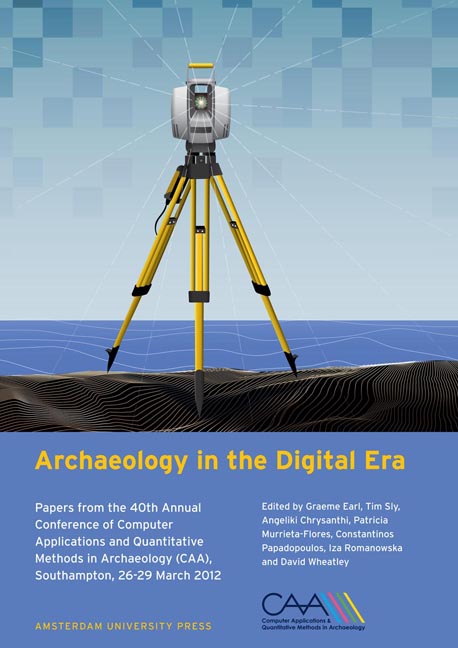 Archaeology in the Digital Era
Archaeology in the Digital Era Cultural Heritage Application Schema: a SDI Framework within the Protected Sites INSPIRE Spatial Data Theme
Published online by Cambridge University Press: 16 February 2021
Summary
Abstract:
We present a Cultural Heritage data model built under the European INSPIRE Directive. This model extends the Data Specification on Protected Sites -one of the reference spatial data themes of the INSPIRE Annex I- through the development of cultural issues by means of new classes and attributes. The aim is to achieve an interoperable schema that allows organising and sharing georeferenced cultural heritage information via Spatial Data Infrastructures. This involves the use of standards and norms about several topics, such as geographic information, cultural heritage and documentary resources. The data model includes three parts: 1) a legal part about the administrative definition of protected sites, 2) a cultural part devoted to the description of the cultural entities that are subject of valuation and protection, and 3) a documentary part for the inclusion of information resources (texts, images and so on) about these cultural entities.
Keywords:
Cultural Heritage, Spatial Data Infrastructure, INSPIRE, Conceptual Data Model, Interoperability.
Introduction: INSPIRE, Protected Sites and Cultural Heritage
This paper presents a proposal of application schema about cultural heritage under the INSPIRE Directive (Directive 2007/2/EC), which establishes an Infrastructure for Spatial Information in the European Community. We use the term application schema in the way INSPIRE does, as the formal description of a conceptual data model about a certain part of the real world.
This model develops the INSPIRE Data Specification on Protected Sites (INSPIRE Thematic Working Group Protected Sites 2010) for the topic of cultural features. According to INSPIRE principles, the background objective is to provide a basic interoperable framework for describing, organising and sharing georeferenced information to institutions devoted to the management and research of cultural heritage.
The INSPIRE Directive addresses several thematic areas of spatial information, fixed in 34 spatial data themes distributed in three annexes. One of these themes is Protected Sites, defined as “area designated or managed within a framework of international, Community and Member States’ legislation to achieve specific conservation objectives” (Directive 2007/2/EC, 11). It is included in Annex I, which means that it is considered as reference data and so it is priority in its development.
- Type
- Chapter
- Information
- Archaeology in the Digital EraPapers from the 40th Annual Conference of Computer Applications and Quantitative Methods in Archaeology (CAA), Southampton, 26-29 March 2012, pp. 279 - 290Publisher: Amsterdam University PressPrint publication year: 2014


